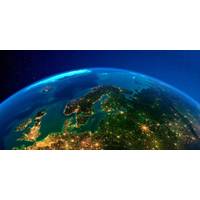
Tapping the Gas Bank in the Barents Sea
Analyses show that the Barents Sea contains significant resources, probably more gas than oil. What needs to be done if Norway is to supply Europe with the requested volumes of gas?The Barents Sea is like a separate petroleum province on the Norwegian shelf. There are currently three options for exporting more gas from the Barents Sea. One option is a pipeline to connect the Barents Sea to the well-developed pipeline system that runs from the Norwegian Sea to the south and west. This option would make the Norwegian shelf a single petroleum province, tied together with solid and highly-developed
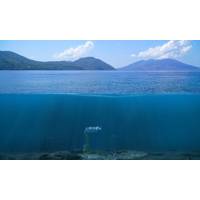
Scottish Firm Nova Innovation Gets Funding for Indonesian Tidal Turbine Array Study
untapped resource, capable of powering Indonesia for generations to come.”Indonesia is one of the world’s largest countries, with over 270 million people and 17,500 islands. According to Nova Innovation, the country's electricity grid is currently dominated by fossil fuels – coal, gas, and oil – which together accounted for 83% of electricity generation in 2020. However the Indonesian Government has committed to increasing renewable energy production by 2030, and the country’s abundant tidal energy resources provide the perfect opportunity to decarbonize its economy
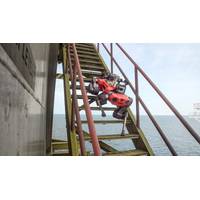
ROBOTICS: Meet Your New Offshore Robotic Co-workers; Charles, Eddie, ANYmal & Spot
for some form of ‘eyes’ on site, and even intervention capability, which is where robots come in.Total took a Taurob Inspector on a one-week trial on a platform offshore the Netherlands. Photos from TotalEnergies. TotalEnergies’ first step was the Argos (Autonomous Robots for Gas and Oil Sites) challenge from 2014-2017, developing the “first ATEX autonomous ground robot”. Since 2018, it has been part of the Offshore Ground Robotics Industrial Pilot (OGRIP), an OGTC-supported project, which has developed Taurob’s Argos-winning robot further, creating the now commercial

Norway Eyes Sea Change in Deep Dive for Metals Instead of Oil
Norway's oil and gas reserves have made it one of the world's wealthiest countries but its dreams for deep-sea discovery now center on something different.This time, Oslo is looking for a leading role in mining copper, zinc, and other metals found on the seabed and in hot demand in green technologies.Norway could license companies for deep-sea mining as early as 2023, its oil and energy ministry told Reuters, potentially placing it among the first countries to harvest seabed metals for electric vehicle batteries, wind turbines, and solar farms.That could also place it on the front line of a
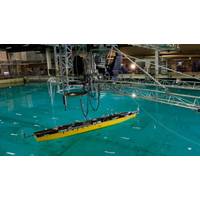
Higher Learning & SINTEF’s Existential Rise
say it was here that Norway’s decades old pump makers “scaled up” to produce space-age, valve-dense tools to get the most oil and gas out of offshore reservoirs.Flow assurance has been key. SINTEF expertise helped engineer the removal of things like frosted hydrates (or slugs) from gas and oil on its way to final processing. Decades of research have given birth to the Nyhamna and Hammerfest gas plants’ “slug catchers”, the landfall of angular pipes bearing multiphase gas from remote and arctic offshore fields.Thirty years of research into flow assurance yielded a host
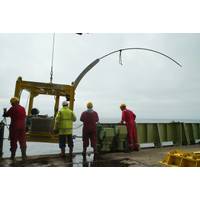
Increased Confidence in CO2 Storage
If we are going to store large volumes of carbon dioxide (CO2) in depleted oil and gas reservoirs beneath the seabed we need to be sure that, in the unlikely event of a leak, we can detect it. A research expedition, carrying a world-first experiment designed to develop methods for the detection and monitoring of leaks, has just returned from the North Sea; it has been declared a great success.Climate change, driven by increasing CO2 levels in the atmosphere, is now a well-established side-effect of human activities that is having profound effects on the Earth’s natural systems. While
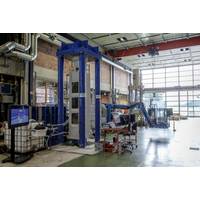
DNV GL to Test Bolt Fatigue for API
companies achieve quality management and safety goals,” said Debra Phillips, vice president of API Global Industry Services.“Through research and testing such as the work that DNV GL will complete, we contribute to a culture of safety, innovation and continuous improvement in the natural gas and oil industry,” Phillips added.Frank Ketelaars, Regional manager Americas, DNV GL - Oil & Gas, said, “It is encouraging to see API taking a leading role in enhancing industry safety. The type of fasteners tested are used in critical subsea applications and are often exposed to fatigue
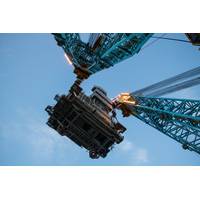
Statoil Set to Drill Its Biggest Arctic Hope
up drilling in the Barents Sea this year as the government seeks to attract more explorers to its Arctic waters to make up for declining North Sea output. The Norwegian Petroleum Directorate said on Monday Statoil's latest well in the Barents Sea, Gemini North, had found only minor volumes of gas and oil. "The well was drilled with the ambition of proving up additional oil resources in the vicinity of the Wisting discovery, but like the previous Blaamann well, we discovered gas," said Jez Averty, senior vice president for exploration in Norway and the UK. The Kayak

Emerson Launches Salinity Measurement System
Emerson launches new salinity system for increased flow assurance and to maximize oil and gas production; through new system, operators can instantly identify changes in the flow stream, take remedial action and maximize oil and gas production Emerson Automation Solutions launched the Roxar Salinity Measurement System for the sensitive, accurate and real-time measurement of saline water in gas production well streams at the Offshore Technology Conference (OTC) in Houston this week. Through the new system, operators can instantly identify changes in the flow stream and the smallest



 February 2024
February 2024





